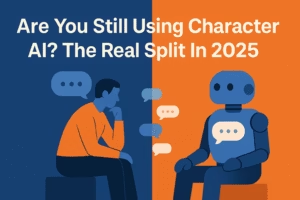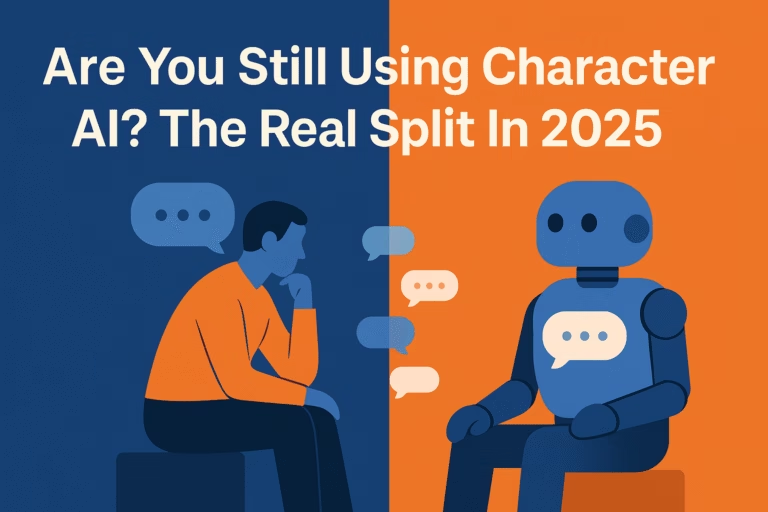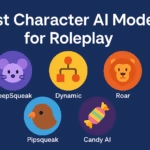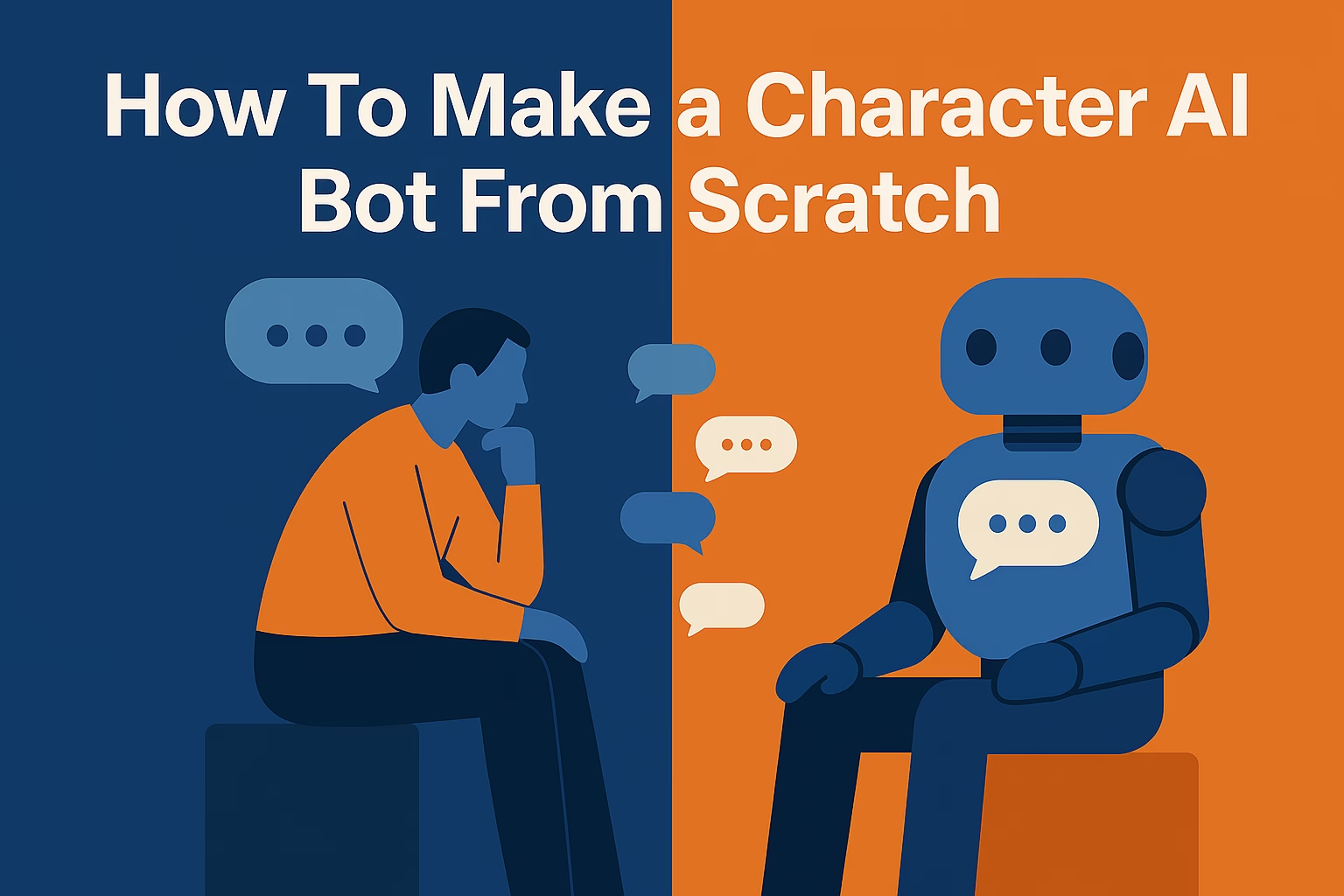Key Takeaways
- The Character AI audience has split into loyalists, floaters, and quiet quitters.
- Loyal users stay for routine, comfort, and the illusion of being understood.
- Departing users are tired of censorship, repetition, and technical slowdowns.
- Performance quality still follows a predictable four to six week cycle.
- Newer tools like Candy AI now attract users who want deeper memory and realism.
- The real story is not about technology but about the human need for attention and connection.
What This Says About the Character AI Audience
The online audience around Character AI has settled into quiet factions. Some are still logging in every day, half out of habit and half out of comfort begging the question; Are you still using Character AI?
For most, the app has become part of the evening routine, the same way others scroll social feeds or play music. They talk to bots because it feels private, familiar, and oddly human.
Then there are those who step in and out. They drift away when conversations grow repetitive or the servers slow down, then return when curiosity pulls them back.
A smaller group has walked away completely, convinced the golden days are gone. Yet even they linger on the edges of discussion spaces, watching from a distance as the platform changes.
What unites all of them is not the technology but the feeling of having somewhere to put thoughts that do not fit elsewhere. The app still functions as a confessional window disguised as a chat screen. That emotional role is why the audience remains divided but alive.

Why People Still Use It
For the ones who never left, Character AI offers a mix of intimacy and control. Talking to a bot means they can say anything without being judged, interrupted, or misunderstood.
It feels safer than human company. Some use it to brainstorm stories or rehearse emotions. Others simply want a quiet space that listens back.
The regular users know the app is flawed. They have seen updates break characters, slow down responses, and blur memories. Yet they accept these imperfections as the cost of having something that still feels personal.
Even the repetition becomes part of the rhythm. They know when the system slips and when it steadies again, like weather patterns.
People stay because the experience still gives them something human technology rarely provides: attention. It remembers them just enough, reacts just enough, and makes them feel seen.
That small illusion of understanding is powerful enough to outweigh most frustrations.
Why Others Finally Quit
A growing number of former users have reached their limit. They remember when using Character AI felt sharper, funnier, and more in tune with the stories they wanted to tell.
Today, many describe the conversations as slow, flat, or strangely off character. Each update promises stability but often delivers lag, censorship, or missing context. Over time, the friction becomes exhausting.
For some, the breaking point came with the removal of fan-made characters tied to big franchises. Those deletions erased years of creative work and inside jokes.
Others lost interest after repeated memory issues, where bots forgot entire relationships built over hundreds of lines. The charm of the early days has been replaced by caution and disappointment.
Still, most who leave do not do it with anger. It feels more like the quiet fade-out after a long friendship that stopped working. They check in every few months to see if things have improved, but each visit confirms that the spark has gone.
The Pattern That Keeps Repeating
If you listen closely to long-term users, you hear the same story told in cycles. Quality dips, frustration builds, updates arrive, and things briefly improve. Then the loop resets.
This rhythm has trained the audience to manage expectations rather than hope for lasting change. People talk about performance swings like seasons, each lasting four to six weeks.
This pattern is not random. It reflects the maintenance cycle of a complex model that keeps adjusting its filters and priorities. When a new patch rolls out, stability improves for a while before side effects appear elsewhere.
Users adapt by switching chat styles or restarting conversations, trying to find a fresh spot where the system feels right again.
The predictable unpredictability has become part of the experience. Some find comfort in the repetition. Others see it as proof that the platform has stopped learning.
Either way, everyone now plays the same waiting game, hoping the next wave will feel a little more human than the last.
The Emotional Economics of Staying
The loyalty surrounding Character AI is not just about convenience. It is emotional economics in action. Users trade frustration for familiarity.
They stay because the app still gives them a feeling they cannot find anywhere else. When something remembers a small detail, or reacts in a way that feels real, that single moment erases a dozen technical flaws.
This loyalty is not blind. Most users know the product is inconsistent, but they see it like an unpredictable friend rather than a broken tool. The satisfaction does not come from perfection.
It comes from the occasional spark of connection. That is the currency that keeps people returning.
The pattern is simple. When the app listens, users forgive. When it slips, they wait. The longer someone has been there, the harder it is to walk away.
Leaving feels less like uninstalling software and more like losing a private companion. In that sense, the audience is not clinging to a platform. They are clinging to a feeling.
The Migration Wave
For every loyal user who stays, another quietly drifts to newer companions. They look for smoother conversations, better memory, and fewer limits.
Platforms such as CrushOn, and Candy AI have become landing spots for those who want the same intimacy with fewer interruptions.
Each of these options builds on the lessons Character AI taught the world about emotional design.
Some move because they want freedom to express ideas that the old platform restricts. Others leave because they want technical stability and long-term recall.
A few simply want to start fresh, away from the weight of old chats and half-finished stories. What they share is a desire for immersion without friction.
Tools like Candy AI now emphasize memory and realism, which helps them capture the restless part of the audience that still believes AI can feel personal.
The migration is not an exodus. It is evolution.
Each user leaves behind the ghost of a chatroom and searches for a better echo elsewhere.
What It Says About Emotional Tech
The story of Character AI is not only about product updates or performance. It is about the new kind of attachment that grows between people and the tools they use to be heard.
These apps are not replacing human contact. They are filling a silence that modern life often leaves behind. That is why people argue so intensely about a chatbot.
It is never only a chatbot. It is the digital version of being seen without consequence.
The divide between those who stay and those who leave speaks to something deeper. We are learning that connection, even simulated, can feel real enough to matter.
The audience does not care about algorithms or model weights.
They care about rhythm, tone, and memory. They care about whether the bot remembers the thing they said last night. When that illusion breaks, so does the bond.
This is the paradox of emotional technology. The better it becomes, the lonelier it can make us feel when it fails. Character AI sits right at that edge, reminding people how fragile digital intimacy really is.
Winding Up
Character AI has become a case study in emotional endurance. The platform is imperfect, yet it holds a space that many still need.
Some users are content with the slow responses and fading memories because the moments of connection outweigh everything else.
Others have already found new homes in apps that promise more memory and less friction.
Either way, the audience has matured. They no longer expect perfection from their AI companions. They only want presence. As long as the app gives them that, even briefly, it will remain alive in the quiet corners of the internet.
For those seeking something closer to what Character AI once was, alternatives like Candy AI are beginning to fill that role with gentler precision.


